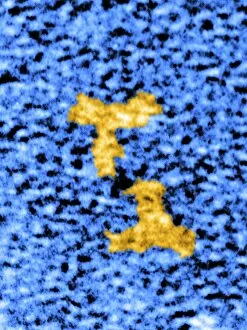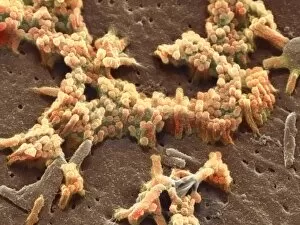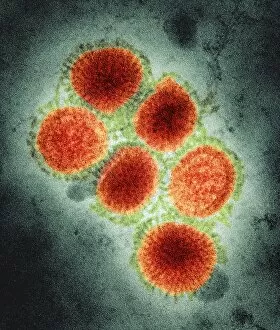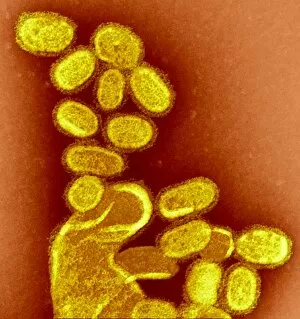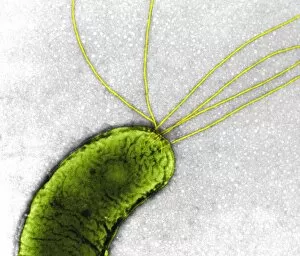Negative Staining Collection
"Revealing the Invisible: Negative Staining Unveils Immunoglobulin G Antibodies under TEM" Negative staining, a powerful technique in electron microscopy
All Professionally Made to Order for Quick Shipping
"Revealing the Invisible: Negative Staining Unveils Immunoglobulin G Antibodies under TEM" Negative staining, a powerful technique in electron microscopy, allows us to visualize minute details that would otherwise remain hidden. By employing this method, scientists have successfully captured the intricate structure of Immunoglobulin G (IgG) antibodies using Transmission Electron Microscopy (TEM). These remarkable images provide invaluable insights into the functioning and effectiveness of these essential components of our immune system. In another groundbreaking application, it has enabled researchers to examine the notorious H1N1 swine flu virus at an unprecedented level of detail. Through TEM imaging, we witness the menacing presence of this viral strain as it invades host cells with its characteristic spike-like projections. This visual revelation aids in understanding how H1N1 spreads and causes illness within our bodies. Moreover, Scanning Electron Microscopy (SEM) further enhances our comprehension by offering a three-dimensional view of the H1N1 swine flu virus particles. SEM reveals their textured surface and provides a more comprehensive understanding of their morphology and potential vulnerabilities. The power becomes even more evident when studying specific strains like the 2009 H1N1 swine flu virus. With TEM's high-resolution capabilities, scientists can scrutinize every aspect of this particular variant responsible for a global pandemic. The detailed imagery showcases its unique features such as spherical shape and surface spikes – crucial information for developing effective vaccines or antiviral treatments. Through negative staining techniques combined with advanced microscopy technologies like TEM and SEM, we unravel mysteries on a microscopic scale that were once invisible to us. These captivating visuals not only deepen our knowledge but also inspire new avenues for research aimed at combating infectious diseases effectively.

